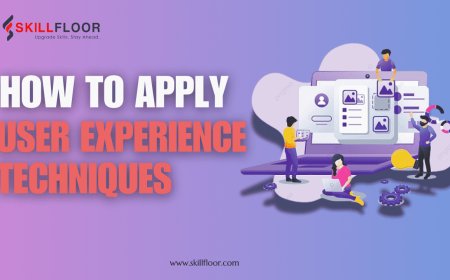What is Blogging in Digital Marketing
Learn what blogging in digital marketing is and how it enhances brand visibility, engages audiences, and drives traffic. Discover key strategies for effective blogging.

How do companies succeed in a very competitive market? Companies of all sizes need to invest in digital marketing. In digital marketing, blogging stands out as a vital tool for success since it is a potent means of connecting with audiences, sharing insightful content, and driving sales. Other methods, such as social media advertisements, email campaigns, and SEO, are also commonly employed.
What is Blogging?
Blogging is the process of writing and publishing textual information on the internet, typically in the form of posts or articles. It started as a personal journal or a hobby and has now developed into an essential tool for businesses. Blogs help engage audiences, establish brand authority, and offer helpful information on subjects that readers care about by consistently providing insightful and timely material.
Blogging in Digital Marketing is used by companies to increase their online visibility, establish a connection with their target market, and increase website traffic. By using SEO techniques, blogs may also help improve their search engine rankings, which will make it simpler for visitors to locate your material when they do relate internet searches.
7 Types of Blogging
-
Personal Blogging: Sharing thoughts, experiences, or personal stories on a range of subjects, either as a means of connecting with readers who have similar interests or as a means of self-expression.
-
Business Blogging: Companies utilize blogs to advertise their goods, services, and core values. By providing useful and educational information, blogs enable them to build consumer relationships and increase their exposure.
-
Niche Blogging: Focuses on a certain hobby or sector, such as travel, fitness, or culinary, and serves a devoted following seeking for in-depth, knowledgeable material in that field.
-
Affiliate Blogging: It's an effective way for bloggers to share ideas, since they offer product reviews and recommendations in exchange for rewards when readers buy things they promote.
-
Guest Blogging: Creating content for other blogs enables you to expand your readership, acquire backlinks for search engine optimization, and become recognized as an expert in your industry.
-
Microblogging: Frequent and brief posts on social media sites such as Twitter and Instagram, providing brief analysis, advice, or personal updates that are simple to interact with and forward.
-
News Blogging: Helps readers keep informed and up to speed on pertinent news by offering timely updates and analysis on current events or trends in particular sectors.
The Role of Blogging in Digital Marketing
-
Driving Website Traffic: Consistently posting new content on a blog helps increase traffic via search engines and social media.
-
Improving SEO: Through the use of pertinent keywords and frequent material updates, blogs can increase search engine ranks and increase website visibility.
-
Building Brand Authority: Regular blogging presents your company as an authority, providing insightful content that helps you gain the audience's confidence.
-
Engaging the Audience: Blogging gives you the chance to communicate with your target audience by attending to their requirements, responding to their inquiries, and providing useful advice.
-
Supporting Lead Generation: Blogs can help capture leads by including calls to action that guide readers toward subscribing, signing up, or making a purchase.
-
Enhancing Social Media Content: Posts on blogs provide insightful information that may be shared on social media platforms, boosting interaction and broadening your audience.
-
Creating Long-Term Value: Long-term marketing advantages may be obtained from blog postings since they are easily accessible, continue to draw attention, and produce leads.
Importance of Blogging in Digital Marketing
-
Fosters Customer Relationships: With the help of insightful, relatable material that caters to readers' particular requirements, blogs provide companies the opportunity to engage with readers on a more personal level and build enduring connections.
-
Educates Your Audience: Blogging gives you a platform to enlighten your audience about market trends, product applications, and solutions, empowering them to make wise choices and establishing your company as a valuable resource.
-
Increases Conversion Rates: Building trust and showcasing your knowledge through well-written blogs that address reader inquiries and provide solutions will help readers make purchases, which can increase conversion rates.
-
Builds Community Engagement: By promoting comments, conversations, and feedback, blogs help businesses build a community that engages consumers and cultivates a devoted following.
-
Supports Email Marketing: With regular material that can be adapted for newsletters, blogs allow you to deliver insightful and timely information to your email readers, keeping them interested and informed.
-
Enhances Brand Visibility: Blogging helps you stand out in a competitive industry and keep your audience top of mind by presenting your company's distinct voice, beliefs, and products. This promotes brand recognition.
What is the Purpose of Blogging?
Blogging's goal is to provide value to readers by sharing knowledge, concepts, and insights via interesting and well-written material. It facilitates interactions, trust-building, and reader connection for both people and companies. Increased exposure and consumer interaction are the results of this relationship in Blogging in Digital Marketing, which eventually contributes to business expansion.
Blogging in Digital Marketing is also important for enhancing search engine optimization, generating organic traffic, and establishing a company as an expert in its field. Blogs provide chances for conversions and long-term success by helping businesses remain current and at the forefront of prospective consumers' minds.
How Blogging Supports Other Digital Marketing Channels
-
Enhances Social Media Engagement: New content for social media may be found in blog posts, which enhances total digital marketing efforts by enabling you to provide insightful information and increase website traffic.
-
Strengthens Email Marketing Campaigns: Regularly posting educational content on your blog may be included in emails to keep readers interested and entice them to check out your website for further details.
-
Supports Paid Advertising: When used as a landing page for sponsored advertisements, blogging in digital marketing may provide consumers with trustworthy, up-to-date material that gradually leads them toward making a purchase.
-
Boosts SEO Performance: Blogging gives you the chance to use selected keywords, which raises the rating of your website in search results and complements other SEO tactics, allowing more people to find your business online.
-
Fuels Content for Video Marketing: Blog entries may be converted into videos, which will provide you with additional content for social media sites like YouTube and Instagram and broaden your audience's preferences.
-
Drives Referral Traffic: Links from other blogs or websites pointing to your informative material increase referral traffic to your website, which broadens your audience and fortifies your entire digital marketing strategy.
6 Steps to Start Blogging
1. Choose a Niche
Choose a niche or sector of the economy that you are enthusiastic about. By doing this, you can make sure your blog stays on topic and attracts readers who are interested in the things you write about.
-
Concentrate on writing about what you like.
-
Examine consumer preferences and viewer interest.
-
Take the topic's long-term viability into consideration.
-
Select a niche that can be profitable.
2. Select a Blogging Platform
Select a blogging platform that provides the tools you want and corresponds with your degree of technological expertise. This will provide the basis for the design and operation of your blog.
-
Consider platforms like WordPress, Wix, or Blogger.
-
Seek for systems that provide simple modification tools.
-
Give mobile-friendly platforms top priority for an improved user experience.
-
Select platforms that provide plugins and tools for SEO.
3. Pick a Domain Name
The online address of your blog is its domain name. To make it easier for visitors to identify and recognize your blog, it should be distinctive, memorable, and pertinent to your content.
-
Make it brief and easy to understand.
-
Verify that it is simple to speak and spell.
-
If you can, choose keywords associated with your niche.
-
Verify the domain's availability before committing.

4. Design Your Blog
Branding and user experience are impacted by your blog's design. Make your viewers feel at ease by selecting a layout, colors, and fonts that are representative of your style.
-
Select a simple, contemporary layout.
-
Make sure it's simple to navigate via your blog.
-
Choose color palettes that compliment your brand.
-
Make your blog responsive to mobile devices.
5. Create Valuable Content
The content you publish should be engaging, informative, and original. High-quality content builds trust with your audience and keeps them coming back for more.
-
Find out what subjects your audience is interested in.
-
Compose unique, superior content.
-
Make use of SEO strategies in your writing.
-
Posts can be improved by including visuals like photos and videos.
6. Promote Your Blog
It's critical to regularly market your material if you want to expand the audience for your site. To reach a larger audience, distribute your blog entries using a variety of marketing techniques.
-
Post content on social media networks.
-
Interact with readers by leaving remarks and critiques.
-
Send out email newsletters to notify recipients.
-
Work together for cross-promotion with influencers or other blogs.
Statistics of Blogging in Digital Marketing:
-
56% of consumers purchase products from a brand after reading its blog posts, demonstrating the influence of blogs on buying decisions.
Spiralytics - 30 Must-Know Blogging Statistics for Businesses In 2023
-
90% of leads generated through blogging come from posts published in previous months, illustrating blogging's long-lasting impact on lead generation.
-
Long-form content (over 3,000 words) generates 77.2% more backlinks than shorter posts, making it an essential strategy for improving SEO.
-
68% of online experiences begin with a search engine, emphasizing the critical role of blogging in driving organic traffic.
Ahrefs - 73 Blogging Statistics for 2024
-
Companies that blog see 97% more backlinks, leading to stronger SEO performance and higher search rankings.
Seomator - Blogging Statistics in 2023
Establishing connections with audiences, disseminating knowledge, and propelling business expansion are all made possible through blogging. It makes businesses stand out in a crowded digital environment by providing valuable content. In addition to increasing brand awareness, blogging in digital marketing strengthens consumer connections. Businesses may improve their SEO, boost traffic, and gain the audience's confidence by working consistently. By keeping businesses current and at the forefront of potential consumers' minds, blogging in digital marketing is a long-term approach that consistently generates new leads, engages devoted customers, and promotes overall business success.






























































